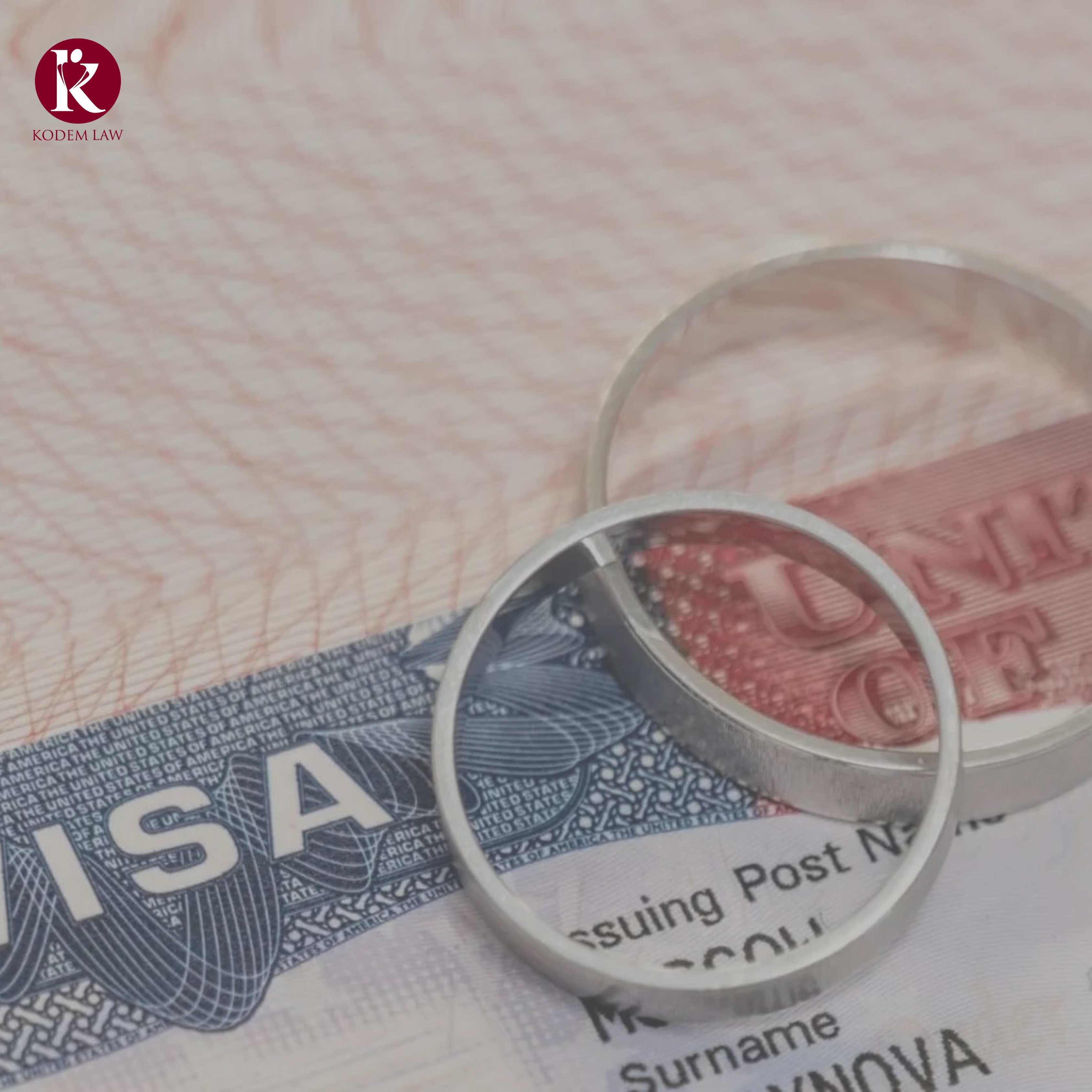
To begin the journey to the United States through a K visa, thorough planning and a comprehensive understanding of the process are essential. This guide will explore what a United States K visa entails, its various types, and the eligibility criteria.
What is a K Visa?
It is a nonimmigrant visa category specifically designed for the fiancé(e)s and spouses of US citizens and their accompanying minor children. It allows them to enter the US to get married and reside with their US citizen spouse.
Types of K Visa
- K-1 Visa: Intended for fiancé(e)s of US citizens who plan to marry within 90 days of entry into the US.
- K-2 Visa: Issued to the minor children (under 21) of the K-1 visa applicant.
- K-3 Visa: Designed for spouses of US citizens who are waiting abroad for their immigrant visa petition to be approved.
- K-4 Visa: Granted to the minor children (under 21) of K-3 visa applicants.
Eligibility for K Visa
How to Check if You are Eligible for a K Visa?
- Both the petitioner (US citizen) and the beneficiary (foreign fiancé(e) or spouse) must meet certain eligibility requirements.
- The petitioner must be legally eligible to marry, and both parties must intend to marry within 90 days of the beneficiary’s entry into the US (for a K-1 visa).
- The beneficiary must be admissible to the US and have a clean criminal record.
Who is Not Eligible for a K Visa?
- Individuals with certain criminal convictions may be deemed ineligible for a K visa.
- Those who have previously violated US immigration laws or been deported may face ineligibility.
- Individuals who cannot demonstrate a bona fide intention to marry the US citizen petitioner may be denied a K visa.
Documents Required for K Visa
While each case varies, typically, the following documents are required when applying for a K-1 visa:
- Proof of U.S. citizenship for the sponsoring fiancé.
- Copy of the sponsored fiancé’s passport.
- Evidence of terminated marriages, if applicable.
- Proof of meeting within 2 years of applying.
- Evidence of any legal name changes, if relevant.
- Sworn statements and evidence from both partners indicating their intent to marry and affirming the authenticity of their relationship.
- Copy of Form I-94 arrival-departure records, if applicable for the sponsored fiancé.
- Evidence supporting International Marriage Broker Regulation Act (IMBRA) waiver, if needed.
- One passport-style photo for each fiancé and two for the sponsored fiancé.
- Birth certificate for the sponsored fiancé.
- Valid, unexpired passport for the sponsored fiancé.
- Police clearance was obtained from countries where the sponsored fiancé resided for more than 6 months, including their country of residence.
- Sealed medical examination report issued by an approved physician, obtained by the sponsored fiancé in their country of residence.
- Affidavit of Support (Form I-134) submitted by the U.S. citizen fiancé. Ensure all required documents are accurate and complete before submitting your K-1 visa application.

What if the Couple Does Not Marry After 90 Days?
If the K-1 visa holder enters the US and does not get married then they cannot extend their fiance visa. The K-1 visa holder should then leave the US and return to their home country. If the K-1 visa holder does not return, they could face deportation and legal consequences.
K Visa Application Process
Here is a step-by-step guide on completing and submitting the petition to the United States Citizenship and Immigration Services (USCIS):
1. Filing the Petition (Form I-129F):
- Complete Form I-129F, Petition for Alien Fiancé(e), as the U.S. citizen sponsor.
- File the form with the USCIS office serving your area.
- You cannot file Form I-129F at a U.S. Embassy, Consulate, or USCIS office abroad.
2. USCIS Approval and Transfer to NVC:
- After USCIS approves the petition, it’s forwarded to the National Visa Center (NVC).
- NVC assigns a case number and sends the petition to the U.S. Embassy or Consulate where your fiancé(e) resides.
3. Applying for a Visa:
- Upon receipt of a letter from NVC, notify your fiancé(e) to proceed with visa application.
- Your fiancé(e) should follow instructions from the U.S. Embassy or Consulate and prepare for the visa interview.
4. K-2 Visa for Eligible Children:
- Children of K-1 visa applicants may apply for K-2 visas separately.
- Each K visa applicant, including children, must submit separate applications and pay the visa application fee.
Common reasons for K-1 visa denials
1. Incomplete or inaccurate documentation: Failure to provide all required documents or providing incorrect information can lead to a visa denial.
2. Lack of evidence of a genuine relationship: Absence of evidence demonstrating a legitimate bond between the U.S. citizen sponsor and the foreign fiancé(e) can result in denial of the visa.
3. Inadequate financial support for the K-1 visa sponsor: The U.S. citizen sponsoring the K-1 visa must sign an affidavit of support to demonstrate his or her financial ability to provide the financial needs of the foreign fiancé(e).
4. Failure to demonstrate preparedness for marriage within the 90-day timeframe: One of the crucial requirements of the K-1 visa is that the couple must be ready to get married within 90 days after the foreign fiancé(e)’s arrival in the United States. This must be proven with a signed statement, indicating your intention to get married within that period. Having supporting evidence for this will be a great boost for your petition.
5. Failure to fulfill health requirements: If the beneficiary fails to meet health requirements or has a medical condition that poses a threat to public safety, the visa may be denied.
How to Maintain Status?
- Fulfilling Your Obligations: Be sure to get married within 90 days of arriving in the U.S. It’s important to follow all visa rules to avoid any legal problems.
- Knowing Your Rights and Benefits: K visa holders have various privileges aiding their immigration journey. These include potential work authorization, applying for a green card, and accessing specific social services.
- Maintaining Continuous Presence: Stay in the U.S. continuously after your arrival, except for authorized travel. Avoid lengthy absences without proper authorization to prevent complications with your visa status.
- Understanding Employment Restrictions: Understand that K-1 and K-2 visa holders usually can’t work without permission. You can start working if you’re approved for a work permit by filling out Form I-765(Application for Employment Authorization).
How Kodem Law Can Help You?
Obtaining a K visa is a significant milestone in the journey toward uniting with your fiancé/fiancée in the United States. You can navigate this process by understanding the application process, overcoming common challenges, and fulfilling your obligations as a visa holder. Remember, Kodem Law is here to support you every step of the way, ensuring that your K visa journey is as smooth and stress-free as possible.

